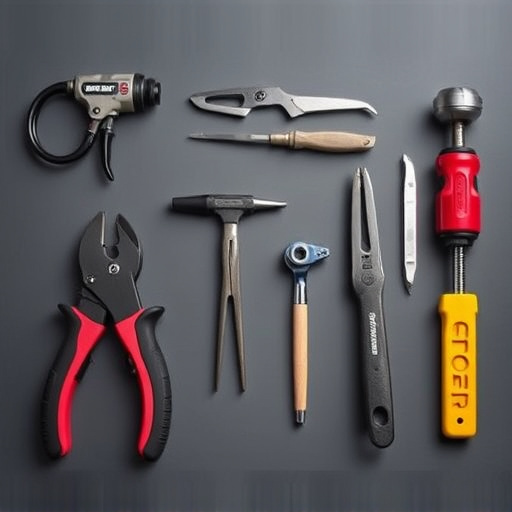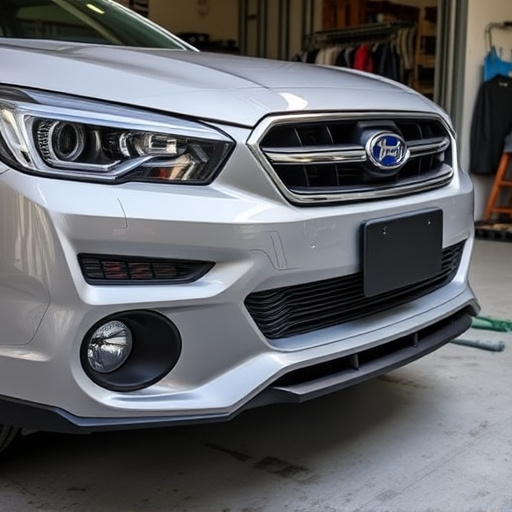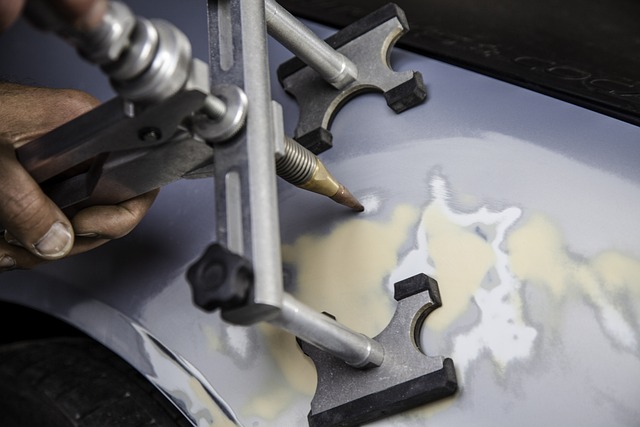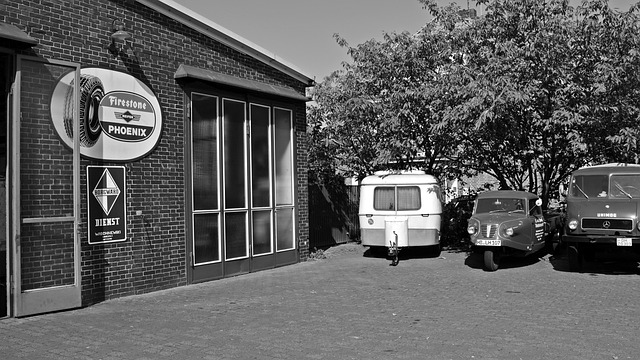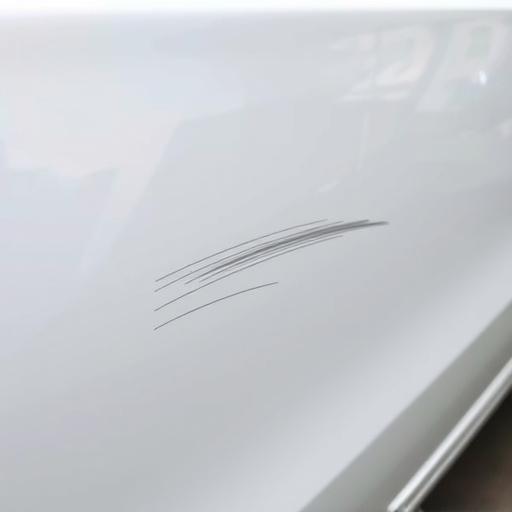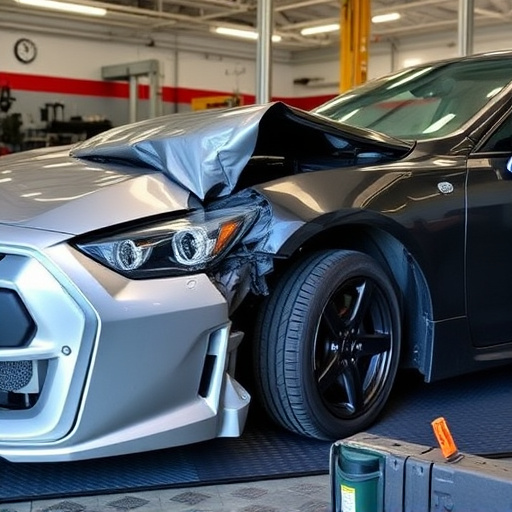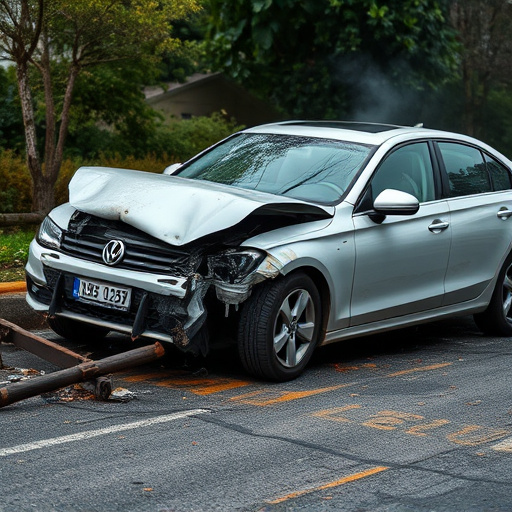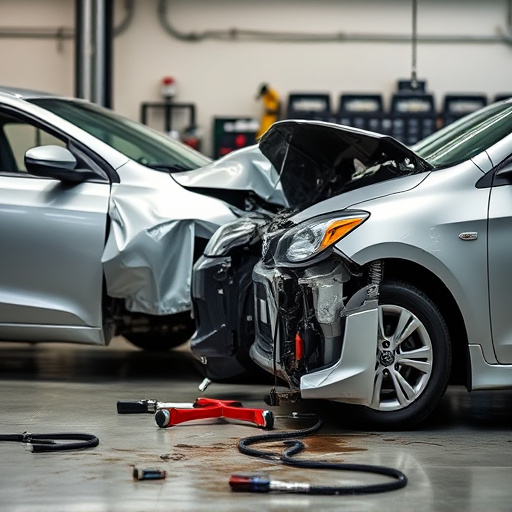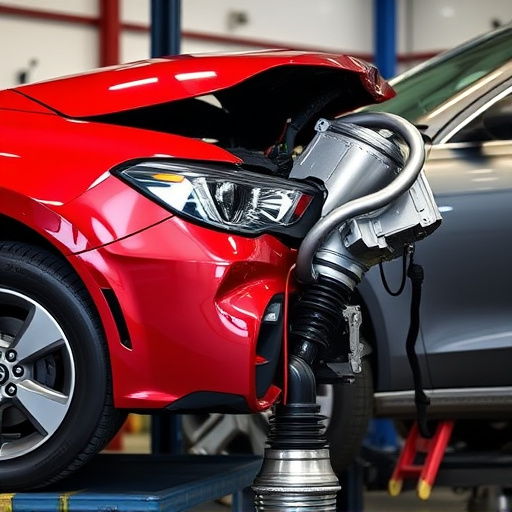Tesla carbon fiber repair combines structural integrity and aesthetic perfection. It involves meticulous inspection, precise removal of damaged layers, application of tailored resins, and curing under controlled conditions. After repair, strategic modifications can enhance vehicle performance through engine, suspension, aerodynamics upgrades, lightweight materials, and high-performance components, while adhering to manufacturer guidelines for reliability.
Tesla’s iconic carbon fiber structure, a symbol of innovation in automotive design, offers exceptional strength-to-weight ratio and aesthetic appeal. This article delves into the art of Tesla carbon fiber repair, exploring its significance for custom upgrades and performance enhancements. From understanding the unique benefits of carbon fiber to mastering the repair process and post-repair modifications, we guide you through transforming your Tesla, ensuring optimal results for both aesthetics and engine room improvements.
- Understanding Tesla Carbon Fiber Structure and Its Benefits
- The Process of Carbon Fiber Repair for Custom Upgrades
- Enhancing Performance: Post-Repair Modifications and Best Practices
Understanding Tesla Carbon Fiber Structure and Its Benefits

Tesla’s innovative use of carbon fiber in their vehicles offers a unique blend of strength and lightness, making it a top choice for both custom upgrades and performance enhancements. This advanced composite material is more than just a stylish addition; it significantly contributes to Tesla’s renowned efficiency and handling capabilities. Carbon fiber repairs, therefore, become crucial when addressing both aesthetic improvements and structural integrity, especially after potential auto maintenance or hail damage repair.
Understanding the intricate structure of Tesla carbon fiber is key to effective vehicle body repair. Its robust network of fibers, infused with a resin matrix, creates a material that’s stronger than steel yet remarkably lightweight. This design allows for precise shaping and customization while maintaining structural integrity, ideal for those seeking both performance upgrades and tailored aesthetics without compromising safety in the process.
The Process of Carbon Fiber Repair for Custom Upgrades

The process of Tesla carbon fiber repair for custom upgrades involves several precise steps to ensure both structural integrity and aesthetic perfection. It begins with meticulous inspection to identify and assess the extent of damage, which could range from small dents and scratches to larger composite failures. Once the damage is accurately mapped, specialized tools and techniques are employed for carbon fiber repair. This often includes using high-quality resins and pigments tailored to match Tesla’s unique carbon fiber weave patterns.
Skilled technicians carefully remove any affected composite layers, clean the damaged area thoroughly, and apply the chosen resin compound. The material is then meticulously smoothed and cured under controlled conditions. For custom upgrades, this process allows for not only repairs but also enhancements, such as adding distinctive designs or patterns to personalize your Tesla’s exterior. After curing, a final polish ensures that the repaired area seamlessly integrates with the surrounding carbon fiber, preserving the vehicle’s high-performance and premium aesthetic.
Enhancing Performance: Post-Repair Modifications and Best Practices

After a Tesla carbon fiber repair, the vehicle’s performance can be significantly enhanced through strategic modifications. This includes upgrades to the engine, suspension, and aerodynamics—all of which can be tailored to the owner’s preferences and driving style. For instance, lightweight materials substituted during the repair process can be further leveraged by installing high-performance components, such as carbon ceramic brakes or lightweight wheels, to boost acceleration and handling.
Best practices for post-repair modifications include ensuring compatibility with the vehicle’s existing systems, consulting with experts in automotive collision repair or specialized Tesla workshops, and adhering to manufacturer guidelines. This approach guarantees that performance upgrades are not only effective but also safe and reliable. Avoiding subpar parts and unskilled labor is crucial, as they can compromise the structural integrity of the carbon fiber body and negate the benefits of the initial repair.
Tesla carbon fiber repair isn’t just about fixing damage; it’s a gateway to unlocking the full potential of your vehicle. By understanding the benefits of carbon fiber’s lightweight strength and rigidity, and employing meticulous repair processes, owners can enhance both aesthetics and performance. Post-repair modifications, when done thoughtfully, allow for even greater customization and power, making Tesla carbon fiber repairs a must-consider for those seeking to elevate their driving experience.
